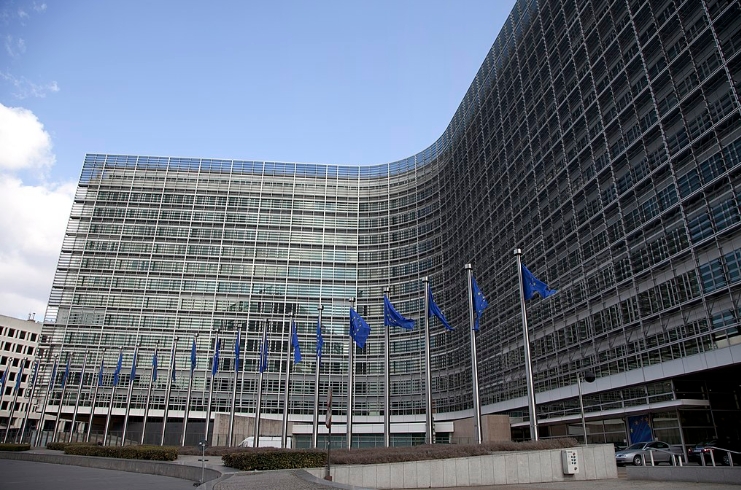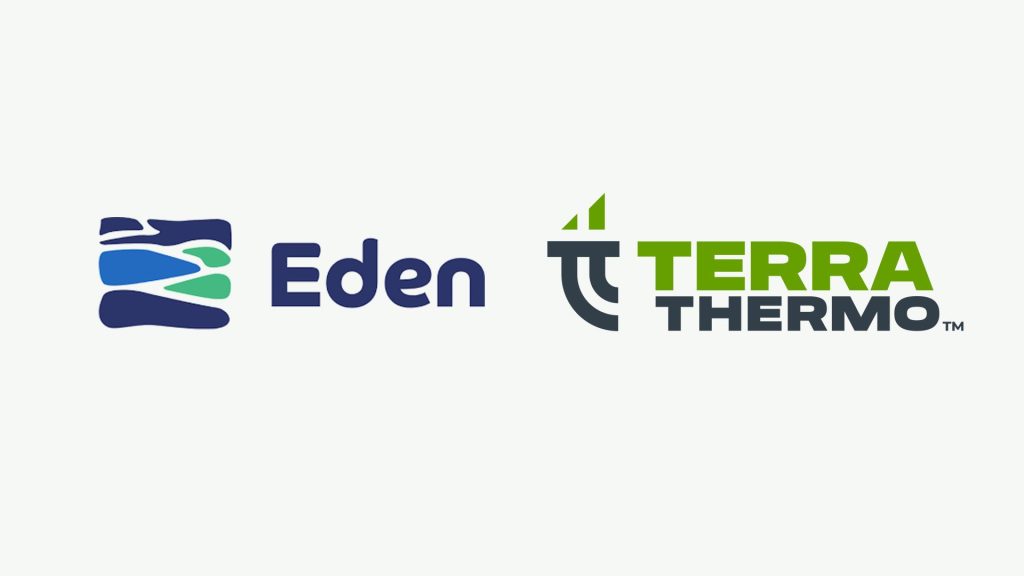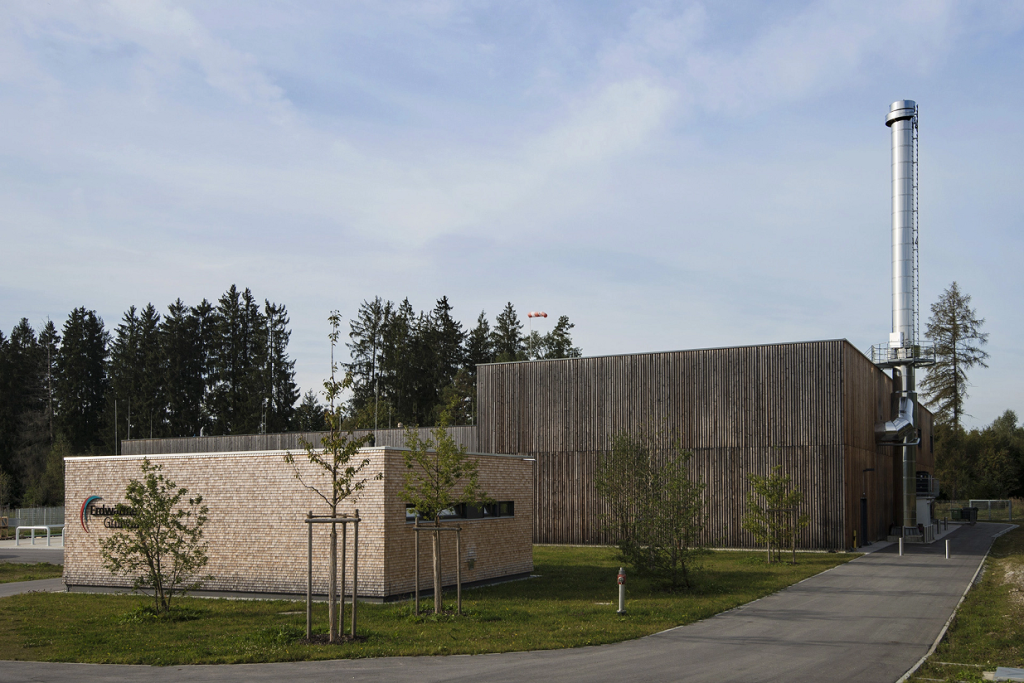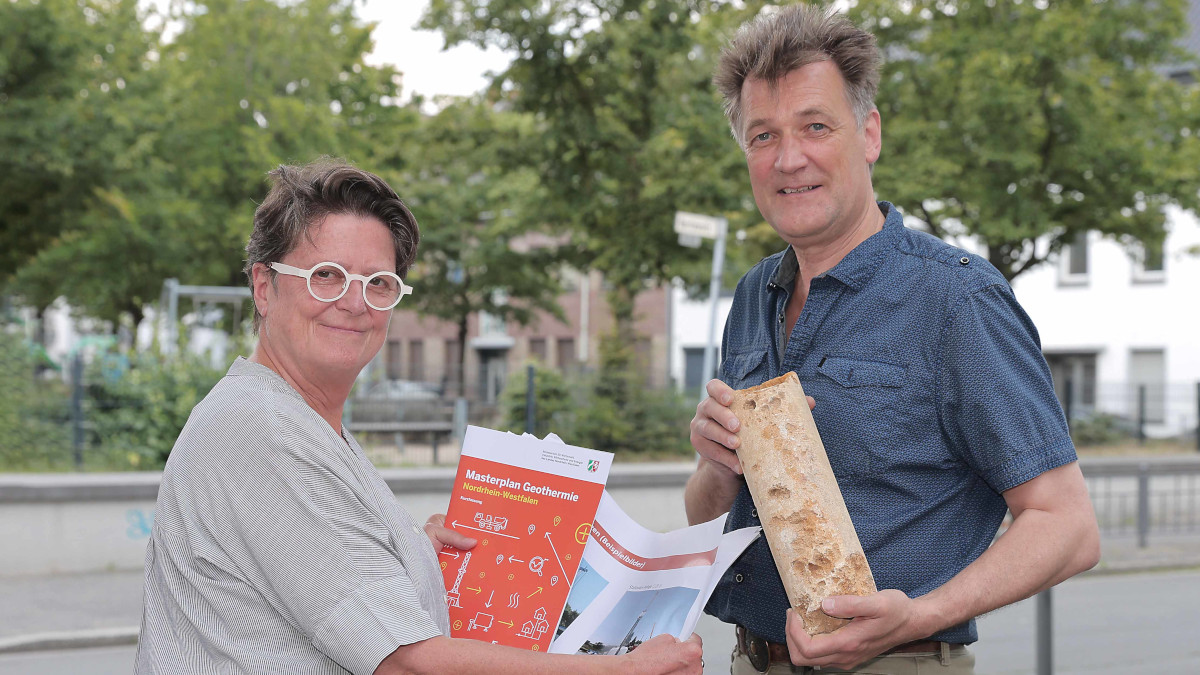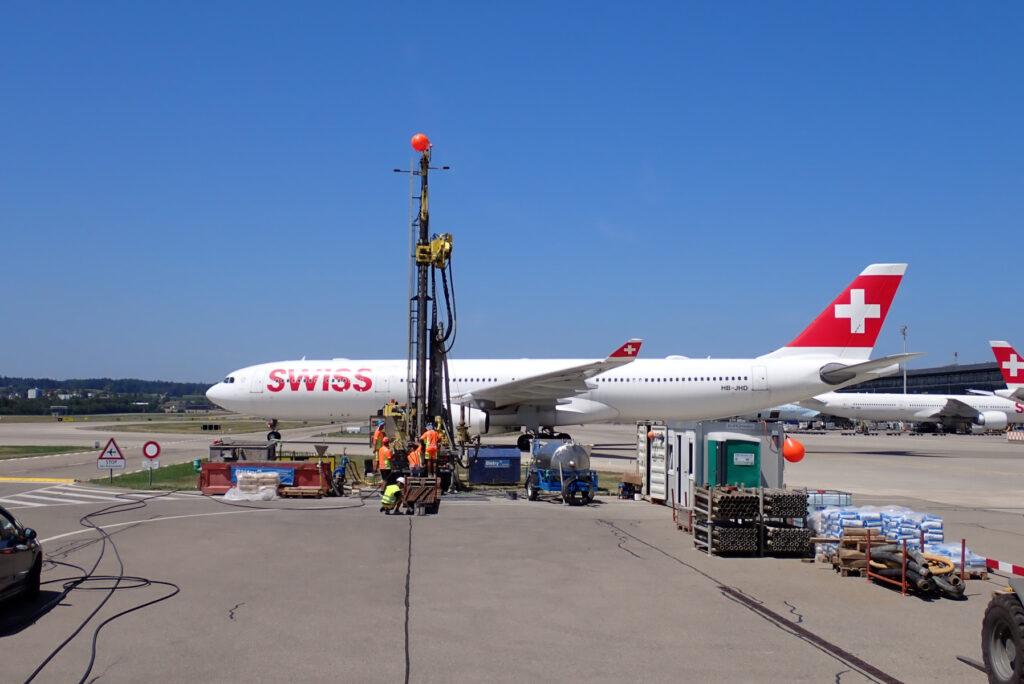
Experts at Flughafen Zürich have been working with closely with IG Rinne, a consortium of engineering consultants at Geo Explorers, Sieber Cassina & Partner AG, and E-Axiom GmbH, to evaluate the potential for geothermal storage in the airport’s subsurface. To this end, seismic investigations have been carried out to identify the depth and size of the potential resource. The findings have been further support by exploratory drilling done at three locations.
The formation being targeted is a subsurface layer of water-bearing gravel located at 300 meters depth and measuring 1 kilometer wide and 30 kilometers long. The aim will be to store excess heat in the summer in the subsurface and take this heat out again during winter. This will an important step for the reduction of CO2 emissions from the airport, most of which are from heating and cooling.
The future test well will help in determining the flow rates and the chemical composition of the geothermal fluids. This will then help determine the number and location of wells that will be needed to support efficient thermal storage. The project might not be implemented to its full potential if too many wells will be needed, but the exploration results have been promising so far.
Depending on the number of wells that will be needed, the investment for the project is estimated to be between CHF 4 to 8 million (approx. USD 4.5 to 9 million). The project is being funded by the Swiss Federal Office of Energy (SFOE) as a pilot project for geo-energy with a maximum of CHF 1 million.
Regardless of whether the thermal storage project will be proven feasible, the current investigations are considered valuable in providing new insights on the use of subsurface layers for thermal storage.
The Paris-Orly airport in Paris, France is one of the more prominent examples of geothermal heating being used in airports. Just recently, the Louisville airport in Kentucky, USA launched its geothermal heating and cooling system – the largest of its kind currently in the USA.
